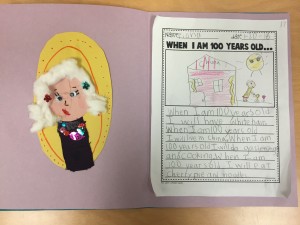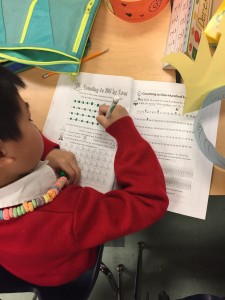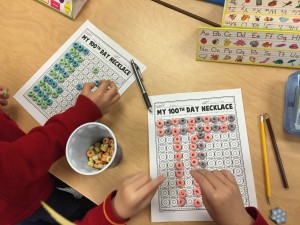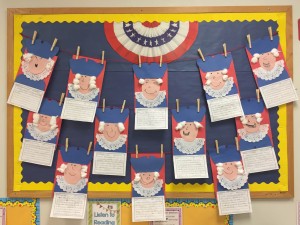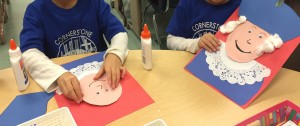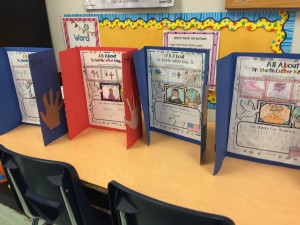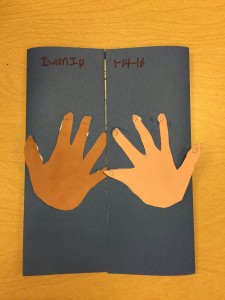 My husband and I love plants. Without a backyard, my apartment has transformed into a near greenhouse! Unfortunately, I have similar restraints in my classroom, as I have a classroom without windows (a crime, I know). Thus, I am forced to teach multi-sensory lessons about plants in a different way than utilizing natural light for students to plant seeds and watch them grow.
My husband and I love plants. Without a backyard, my apartment has transformed into a near greenhouse! Unfortunately, I have similar restraints in my classroom, as I have a classroom without windows (a crime, I know). Thus, I am forced to teach multi-sensory lessons about plants in a different way than utilizing natural light for students to plant seeds and watch them grow.
I owe the success of my plant unit to Stephanie Stewart’s “All About Plants Unit For The Common Core Classroom.” This plant unit is interdisciplinary and has been highly engaging and fun for all of my students including ELLs and students with disability. It offers students hands on projects, lab work, critical thinking, cause and effect, sequencing and more. The plant unit includes 2 weeks worth of lessons and activities to keep all first grade botanists busy in the classroom! I highly recommend this unit for any educators seeking to incorporate a hands on approach to learning about plants, who may not otherwise be able to get their students’ hands dirty with soil in the classroom.
Day 1: Parts of Plant
Education Standards:
CCSS.ELA-LITERACY.W.1.7 – Participate in shared research and writing projects (e.g., explore a number of “how-to” books on a given topic and use them to write a sequence of instructions)
Supplies:
- Large scale plant diagram (hung on pocket chart)
- KWL Chart index
- Card labels for vocabulary words (Root, Stem, Leaves, Flower)
- “Parts of a Plant” informational text
- Flip Book
- BrainPOP, Jr. “Parts of a Plant” video
- scissors, crayons/markers, pencil
Directions:
- First, introduce the lesson objective and schedule. Review class rules expectations of student behavior. Next, instruct students to turn & talk to share what they already know about plants as a brainstorming method. Students can share any two of the “three knows” – What I am sure I know or What I think I know. Count down from ten so students are aware of the time allotted for their cooperative talk. Call upon students to share aloud what they know and record students’ answers under the “Already Know” heading of KWL Chart. Then,instruct students to turn & talk again to share what they want to know about plants. After ten seconds, call upon students to share aloud what they want to know about plants and record students’ questions under the “Want to Know” heading of the KWL Chart.
- Read aloud the “Parts of a Plant” informational text to the whole- group. To accommodate ELLs and special needs students, project the text onto the screen so students are able to read and/or follow along as it is read aloud. Cold call students to identify the vocabulary words introduced in the text (root, stem, leaves, flower). Call upon students to define the purpose of the plant parts in their own words. Record the vocabulary words and their purposes onto index cards. Place index cards onto pocket chart next to large scale plant diagram. To accommodate ELLs and special needs students, play BrainPOP Jr.’s “Parts of a Plant” video to increase students’ comprehensible input through alternative media.
- As a whole-group, take the easy quiz following the BrainPOP Jr. “Parts of a Plant” video to answer questions about key details from the video to informally check for students’ understanding. To accommodate ELLs and special needs students, read aloud each question and the multiple choice answers. Then, direct students to turn & talk to their partner to determine the correct answer. After, re-read the answer choices and instruct students to give a thumbs up or thumbs down for each answer choice. Last, invite a student to the board to select the correct answer for each question.
- Re-direct students’ attention to the KWL Chart. Inform students that they will be asked to share aloud something new they learned about plants. Count down from ten before instructing students to turn & talk to share their ideas to provide them time to think and recall what they have learned from the lesson. To accommodate ELLs and special needs students, prompt students with the sentence starter, “I learned that…” to provide support for students to speak in complete sentences. Record students’ ideas under the “Learned” heading of the KWL Chart.
- Direct students’ attention to the large scale plant diagram hung on the pocket chart. Select students to move the vocabulary word labels next to the corresponding plant part.
-
Students complete the hands on Flip Book for the roots, stem, leaves and flower.
1. First, students fold Flip Book in half.2. Next, students color their flower and then cut on the dotted lines.
3. Then, students label the plant parts.
4. Last, students write the purpose for each part by producing complete sentences inside the Flip Book. To accommodate ELLs and special needs students, allow such students to write the plant part’s purpose in short phases.


